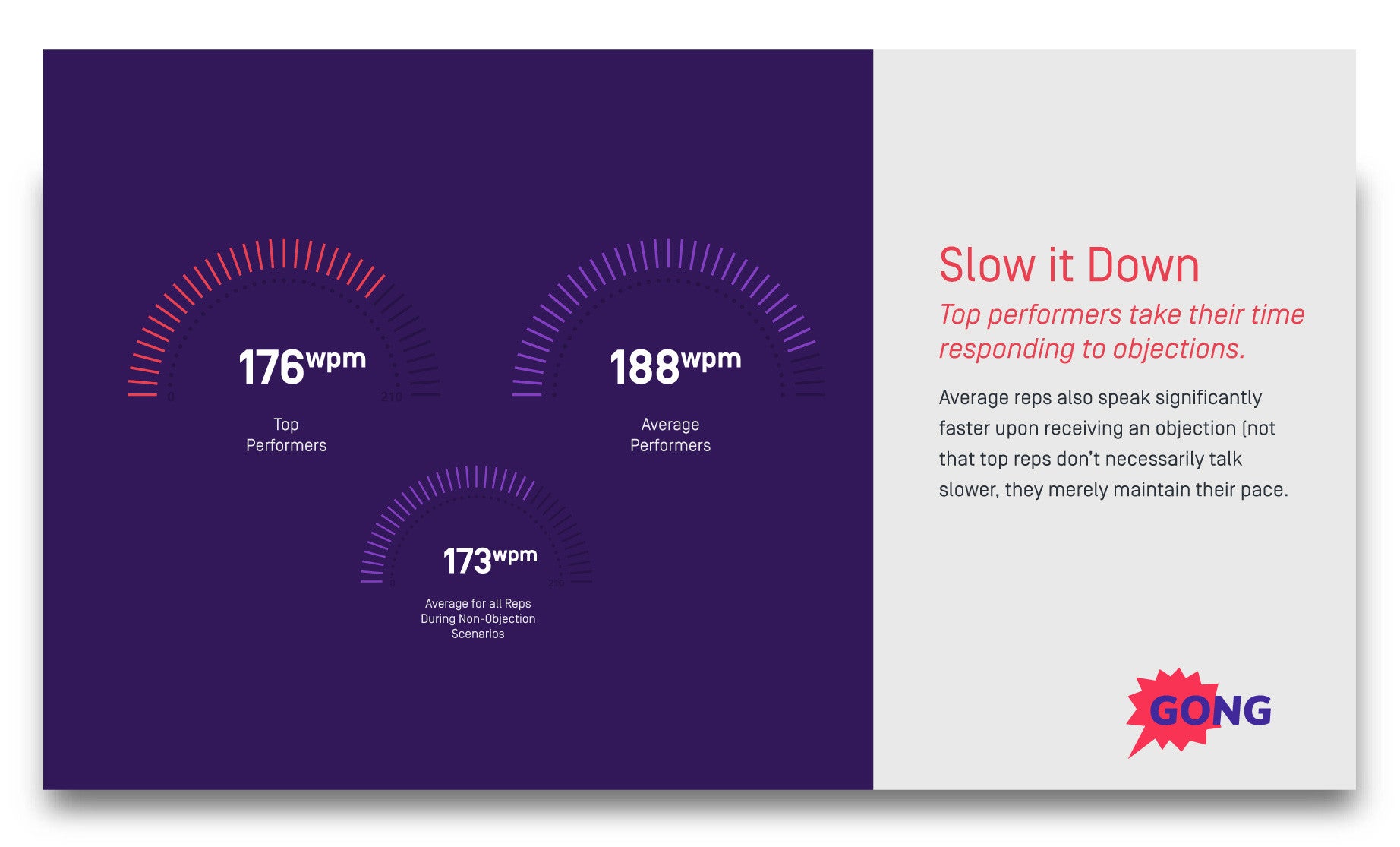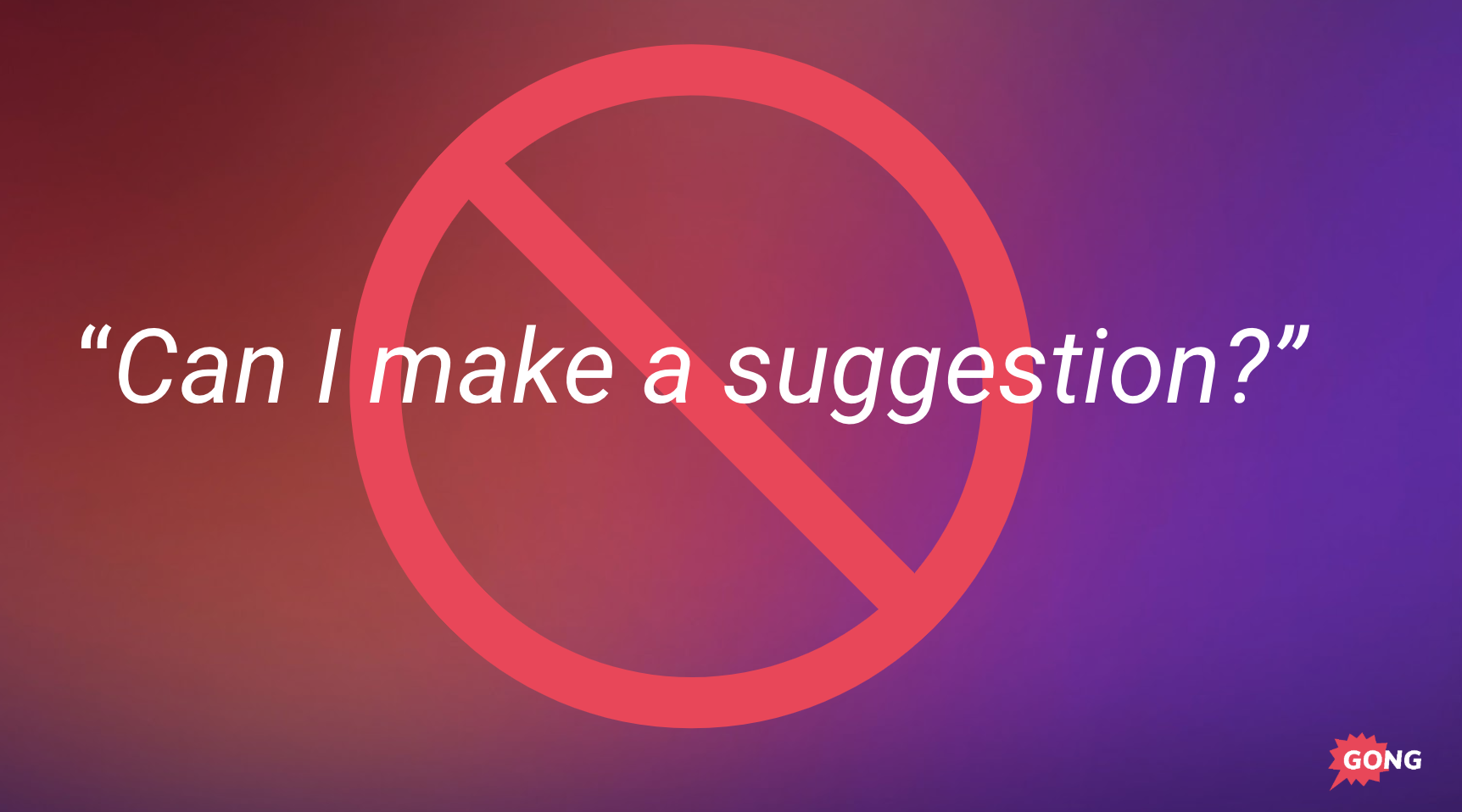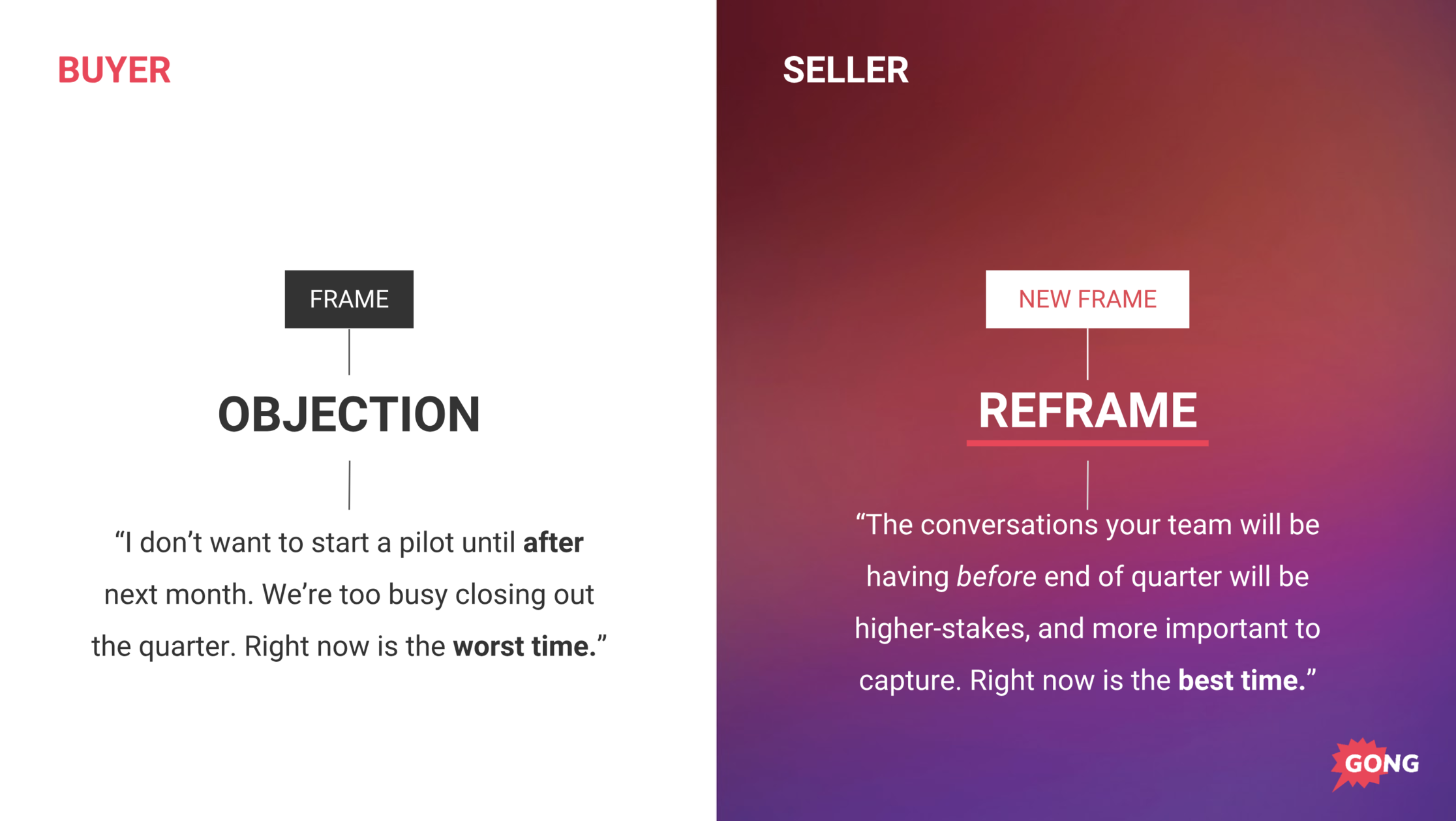The 7 best objection handling techniques for sales reps

In the Gong Labs series, you get fresh research from the analysis of sales conversations with AI. Subscribe here to get insanely great sales tips.
Objection handling tips are all over the Internet.
What makes this (one of) the BEST posts on objection handling you’ll read this year?
It’s the only one that involves hard data.
We studied 67,149 sales meetings from our database of three million recorded calls.
The team analyzed them with AI to identify what that correlates with success, based on data.
Dozens of things stood out, including how successful salespeople respond to objections.
This post outlines everything we’ve learned about objection handling from both the data, and hard-won experience.
P.S. Download our FREE Objection Handling Cheat Sheet:
STEP ONE: Pause, Speak with Calm Authority
Successful reps pause after objections.
In fact, they pause for longer after an objection than during other parts of a sales call.
It’s as if objections trigger them into slow motion.
By contrast, unsuccessful reps often interrupt the customer upon receiving an objection. They pounce on objections, getting “all riled up.”
They also speak faster after hearing an objection. It’s as if objections make them nervous.
Consider this: In a typical sales conversation, average talking speed is 173 words per minute.
But when flustered by an objection, a bad sales rep will speed up to 188 words per minute.
Top producers slow it down.
If you maintain a calm demeanor amid a flurry of objections, you’ll build trust with your customer.
The rest of the steps won’t matter if you can’t do that.
STEP TWO: Clarify With Questions
According to the data, successful salespeople respond to objections with a question.
Objection scenarios are rife with potential misunderstandings.
If you don’t clarify them, you might address the wrong issue. Doing so creates friction.
Now, here’s what low performers do instead: they react with a knee-jerk monologue.
The customer voices a valid concern, and the sales rep spends the next minute steam rolling.
Not only do they often address the WRONG issue, but talking for long streaks reeks of insecurity.
What question should you ask to clarify objections?
The first one is called mirroring. This tactic is from Chris Voss in his book Never Split the Difference.
Here’s how it works: Repeat the last few words of your buyer’s sentence. And do it with an upward voice tone (like you’re asking a question). It triggers your buyer to elaborate.
The key is to PAUSE and let your buyer further explain.
Now here’s a warning. Ignore at your own peril.
Don’t ask “why?” when clarifying objections. “Why” doesn’t clarify. It’s a threatening question that questions the validity of the buyer’s objection. It puts your buyer on the defensive.
That leads us to the second type of question you can use to clarify objections.
Can you help me understand what’s causing that concern?
Notice this question asks “why” without uttering the word “why.”
To sum up, overcoming an objection is like peeling an onion. The core of the onion is what you want to address.
You have to peel back the outer, surface-level layers.
STEP THREE: Validate the Objection
Alrighty! You’ve played your patience card, bit your tongue, and asked a question (or two).
GREAT! Your next job is to validate the objection.
I’m going to let you in on a secret… humans go through 95% of their lives feeling misunderstood.
If you are the person who understands them, you’ll carry powerful influence.
Giving your buyer the “gift” of feeling understood is so important, that the Solution Selling method dedicates three out of its nine types of questions to “summarizing confirmation questions” (questions that make your buyer feel understood).
If you get this tip right, it might be the first time in your buyer’s life that they’ve felt truly understood.
That’s how rare it is.
Here’s the phrase that makes it happen.
Fill in the blank with an emotion you observed your buyer express.
“That’s a valid concern Stacy. It seems like you’re pretty torn on what to do here.
STEP FOUR: Isolate the Objection
Some objections are smoke screens. Your buyers words vs. what’s actually stopping them from moving forward are sometimes different.
It’s your job to make sure you’re addressing the true objection. Otherwise, you’re wrestling with smoke.
Here’s the exact phrase that gets your buyer to voice the true objection.
If your buyer voices other objections, chances are those are the REAL things you need to overcome.
If they don’t have any others, then the first objection they voiced is the right one.
Congratulations, you’ve isolated the objection :)
STEP FIVE: Get Permission
Each of these steps in isolation seem SIMPLE. But when you put all seven together, magic can happen.
Your next piece to the puzzle is to neutralize your buyer’s mind. Your goal is to make them receptive to a different way of thinking.
Without this critical step, you’ll trigger resistance. You can do every other step, but if you leave this one out, your objection handling efforts will fall short.
First, here’s what NOT to say to gain permission from your buyer:
This question triggers defensiveness. Your buyer will not be receptive to your suggestions.
It triggers the “rebellious teenager effect.” You’ll come across as lecturing. At best, the buyer will smile, nod, and then ignore everything you say.
Here’s the phrase that works like a charm:
Can I bounce a few thoughts off of you?
This question neutralizes your buyer’s mind. It implies that YOU are the vulnerable one, not your buyer.
STEP SIX: Address with a “Reframe”
If you’ve done the last five steps, you can now address the objection with a “reframe.”
Reframes get your buyer will see things through a new “lens.”
Here’s an example.
(NOTE: This example would not work without the previous steps. Without that padding, this is a trite argument. But with the previous steps, and with your buyer’s permission, it will change the way your buyer thinks).
Here at Gong.io, we try to get our buyers to pilot our software. And an objection we often face is this:
“I don’t want to start a pilot until after next month. We’re too busy closing out the quarter. Right now is the worst time to for us to do this.”
Our sales reps reframe that objection from “bad timing,” to “perfect timing.”
Stumped at coming up with your OWN reframes?
Think of a common objection you’re currently struggling with.
Got it? Now ask these questions about it:
Ask those questions, and you’ll come up with some great reframes.
STEP SEVEN: Confirm an Unbiased Resolution
Don’t LEAD the buyer to say what you want to hear. This leaves the objection unresolved, killing your deal later on.
Here’s what to ask to bring closure to the objection:
The exact phrasing of this question matters.
You DON’T want to say something like “Does that resolve your concern?”
That might lead your buyer to giving you a false “yes.” And remember: Objections buried alive never die :) They come up later as killer zombies.
Now, if your buyer responds with “no, we can move on,” CONGRATS! You’ve overcome the objection!
Grow Your Objection Handling Skills
Take your skills to the next level.
The Objection Handling Master Class is FREE and now available. Watch the free master class here:
Objection handling is in the top three sales skills you can learn. Agree or disagree? Comment below.


















